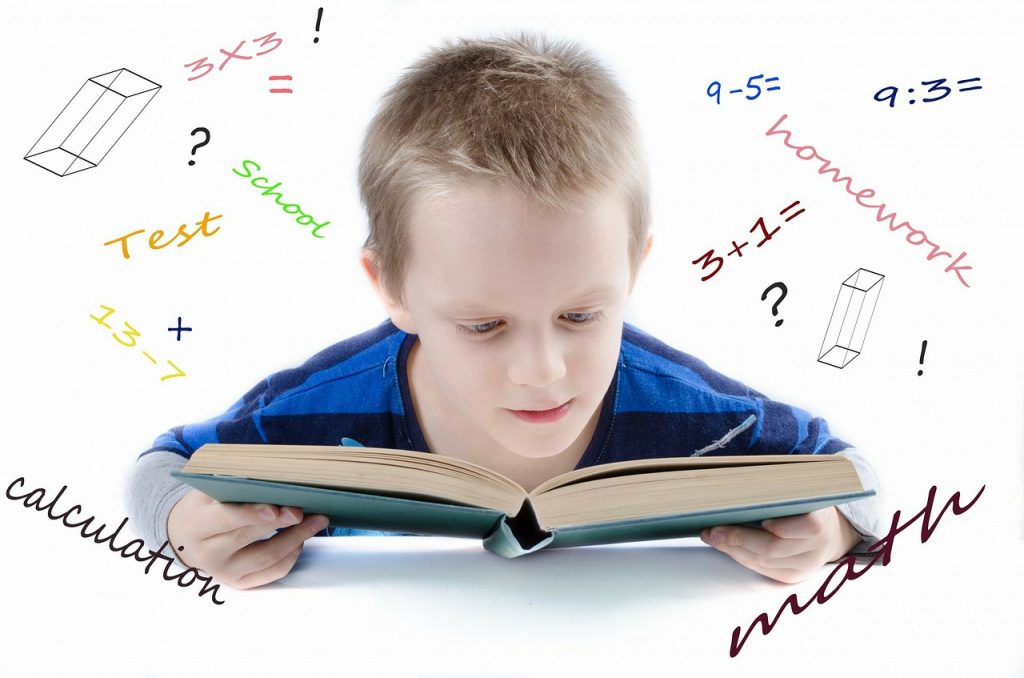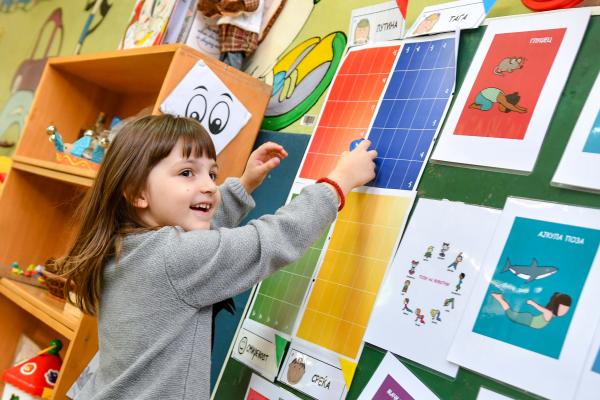Developing reasoning and one-to-one correspondence skills are essential for early childhood learners. Many of the other math process skills will not be understood by preschoolers until they are seven years old. Here are 3 common math process skills that your preschooler will demonstrate:
Hands-on activities
Hands-on activities in preschool mathematics lessons combine fine motor skills with education. Using wooden or foam shapes, children will familiarize themselves with basic geometric shapes. Cutting out colored paper shapes to represent the number two, joining them together, and counting them are all fun ways to engage their minds. Hands-on activities also provide a fun, easy way to introduce new concepts. While counting is a great way to get started, preschoolers also benefit from activities that teach symmetry.
Problem-solving is one of the most challenging aspects of preschool math, yet many preschoolers lack the skills to solve it. Often, they resort to guesswork or operations because they don’t understand the problem. Providing continuous opportunities for students to solve real problems is a good way to foster conceptual understanding. Hands-on activities or online tutors at Brighterly in preschool mathematics can make math more fun and more relevant to their everyday lives.
Jumping games can help preschoolers learn addition and subtraction facts. For example, they can create a ten-frame using a shoebox or a ping-pong ball. After they’ve mastered one-step addition and subtraction, they can move on to the next level of math. Other fun games are built around counting. Water balloons, for example, can be numbered from one to twenty. Students can then choose a number that matches their number.
Another great hand-on activity for kids is playing with tangrams. These puzzles help build visual perception and a child’s understanding of geometry. Pegboards are another great STEAM activity to engage your children in. They can also be used to draw animal shapes in modeling clay. In addition, they can be used to create patterns and games. Creating patterns with self-adhesive pieces of paper are also great ways to teach kids the concepts of size and shape.
Music
Research shows that music and movement can effectively support children’s development in several domains, including mathematics. Additionally, music is fun and entertaining, allowing children to express themselves and demonstrate their interests. Music is often accompanied by movement, and the study also found that children pay full attention to a teacher’s movements. Here are some ways in which music can be incorporated into preschool mathematics lessons. All you need to do is try it!
Children learn mathematical concepts by imitating the rhythm of music. They mimic the beats and clap along with the music, and begin to translate simple patterns into mathematical ones. They also begin to anticipate the sounds and lyrics that will appear in the future, and this leads to early categorization systems and the foundations for algebra. Learning about patterns through music can be extremely valuable in your child’s development.
When incorporated into preschool math lessons, music can help toddlers develop their cognitive skills. Music inspired activities help children develop abstract thinking and connect ideas. For example, a caregiver can sing a song about math while doing everyday activities. Children may also enjoy songs about instruments and learning the names of different instruments. Using music as part of math lessons is a great way to make learning fun and enriching. The possibilities are endless!
In order to explore how music can support the development of numeracy and rhythm, preschool teachers can integrate music into their math curriculum. Moreover, music can also help children retain and memorize mathematical concepts. This way, preschoolers can learn to count by fives up to 100 and learn about skip counting in a more meaningful manner. It is essential that teachers implement music in preschool classrooms. And it doesn’t have to be boring or difficult for your preschoolers.
Colorful manipulatives
There are many wonderful colorful manipulatives for preschoolers to use to develop their mathematical skills. These fun toys are great for counting, patterning, and subitizing. Many classroom teachers also use these cubes for fun math games. Also check out Unifix cubes, a popular set of manipulatives for young children. This set also includes a magnetic ten frame so the counters won’t fall off.
For teaching counting, two-colored counters are ideal. These little cubes can be stacked to form towers of the same height as another object. Children can even count blocks to twelve to build a column taller than themselves. You can also use these colorful cubes to line up blocks along a couch and measure their length. These colorful manipulatives are great for teaching young children about the importance of counting, and reinforce their learning with repetition.
There are many different kinds of math manipulatives you can use to teach children about basic geometric shapes. Using play coins will reinforce the basic idea that shapes come in different shapes. They will also give the child an example of a particular shape, so they will know how to compare two similar shapes. They’ll also learn more about different shapes and patterns through these fun and educational manipulatives. The more fun manipulatives you use, the more your child will learn!
Math is often abstract, and it can be difficult for younger children to understand the concepts. By using math manipulatives, children can see the math concepts they’re learning. They can also check their own work, which helps build their confidence in their skills. The more they practice, the more fluent they will be. This is important, because math is a language that needs to be learnt. It should be fun and engaging for both you and your child.
Race cars
There is no better crowd-pleaser for teaching math than race cars. Kids as young as kindergarten love playing with toy cars and watching them race. Children as old as third grade and even older still dream of owning a race car someday. In this article, we will explore ways to use race cars to teach children important math concepts. Also, discover why race cars make a great teaching tool. Continue reading to learn how to use race cars in your classroom.

If you want to teach your children how to measure things with simple objects, use race cars to make math fun. For example, you can use your favorite race car to measure the length of your body or a counter or couch. You can even use a stop watch to time each car’s speed. Once you’ve learned the basics, you can practice counting with race cars, too. This is a great way to reinforce the concepts of counting, measurement, and time.
Another easy and affordable activity to teach preschoolers about number recognition is to play a racing game. Preschoolers will enjoy playing a fun game where they must match cars of different colors and get the same number as the first one. You can also use colorful game cards and a gameboard to teach them the first numbers. Once they’ve learned these numbers, they can move on to more advanced games. These race car games will teach your preschooler the basic math concepts of counting.
Another fun activity for children is sorting race cars. You can also create a problem for them to add up. For this activity, you can use race cars fact cards. There are many other fun activities to try, too! There’s even a bundle of math games for preschoolers. If you’re looking for a fun way to teach fractions, this is a great option! There are five race car games included in this kit, which will make math lessons more enjoyable for your children.
Number tracing board
A number tracing board is a great way to introduce early mathematics to toddlers and preschoolers. This wooden board is the perfect size for toddlers and preschoolers to trace with their fingers, allowing for both sensory play and counting. They can also be used for spelling and counting. Here are a few of the benefits of this board:
Besides developing writing skills, number tracing boards help kids develop their hand and eye coordination. They help children practice their finger and hand muscles and strengthen their grip when holding a pencil. Moreover, a number tracing board is made from a child-safe, eco-friendly board, with grooves over 1/2 inch thick. Children can also trace numbers and shapes with the help of a dowel or finger.
A number tracing board helps preschoolers learn about the faces and sizes of shapes. The square, for example, has a face on a cube. This means that a square faces a cube, a rectangular prism, or a triangle. These shapes are often used to teach symmetry and counting to preschoolers. Counting bears are a great math manipulative.
A number tracing board is a great way to teach the concepts of counting and sorting. It helps children build a connection between quantity and number. It is important for children to learn the concept of one in the beginning and to make connections with the numbers as they become more familiar. Using a ten-frame can help them learn the concept of the ten-frame, which is the conceptual bell of the math ball in our day.
A number tracing board can be a great tool to encourage children’s early math education. These boards are not limited to counting, but can be used to introduce concepts like one-to-one correspondence. By creating a number chain, kids can practice tracing numbers with many objects. Once they feel confident with the concept, they can work up to showing quantity with more than two types of objects.
